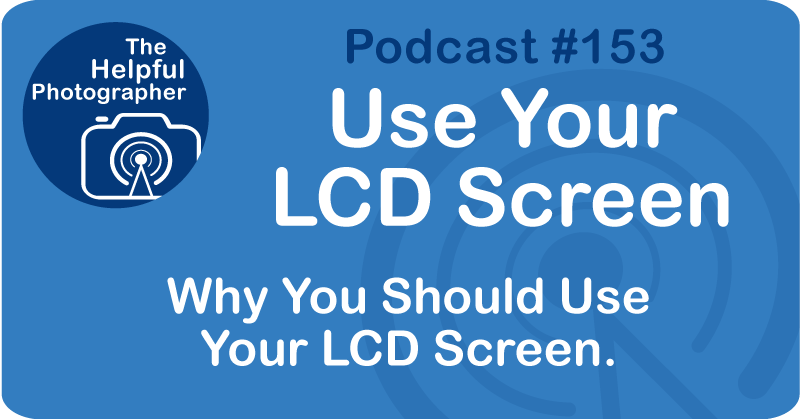Use Your LCD Screen #153

Today I want to talk about a question I get a lot. Should you use the LCD screen on the back of your camera or stick with the viewfinder? For a while now, there's been a trend where bloggers would adamantly tell you never to use the LCD screen. But let's be real, never is a pretty strong word and it's a pretty long time too. Personally, I think the LCD has its time and place and there's a reason it exists. The problem is, if you're using the LCD screen to shoot with, and you have a DSLR, it can be a bit tricky. There can be a noticeable shutter lag, which means you press the button and then it fires. That makes it less ideal for things like action photography, or frankly, most handheld situations. But if you can anticipate the lag, or are in a situation where you couldn't use the viewfinder, it's still a really good tool. But with mirrorless cameras, that lag is fundamentally gone.
The fact of the matter is, the viewfinder on a mirrorless camera is just a small LCD screen. So the two are essentially the same. That said, I still hear people say, never use the LCD screen. And honestly, I don't get it. Here's where I think the LCD is really helpful. When you're shooting at weird angles, I'm not the tallest person, 5'4 to be exact. So if I need a higher perspective, I'll lift my camera over my head and use the LCD to frame my shot. Without it, I'd be guessing and hoping for the best. Tight and awkward spaces are also where the LCD can be critical. Sometimes I need to squeeze my camera into a small opening or get to a really low angle shot, and using the LCD lets me see what I'm shooting without having to physically contort myself or just simply guess.
And lastly, video. If you're shooting video, the LCD is usually your only option, so it's a no-brainer. Having said all of this, let me tell you why I still prefer to use the viewfinder most of the time. First, it's a lot easier to stabilize the camera when it's pressed against your face. Your hands naturally shake more when they're outstretched in front of your body, especially if you're using a heavy lens. Holding the camera up like that for extended periods? Forget it. My arms would be toast.
Another challenge with the LCD is glare. If there's bright light behind you, it can be really hard to see the screen clearly. That's pretty much never an issue when you're using a viewfinder. For action shots, the viewfinder wins hands down. Having the camera close to my face makes it easier to track moving objects smoothly. Now, here's an interesting twist. Contrary to popular belief, using the electronic viewfinder on a mirrorless system actually drains your battery faster than the big LCD on the back of your camera. Crazy, right? That's because the viewfinder has higher resolution and requires more power. So if you're shooting in a situation where battery life is critical, that's a point in favor of the LCD. All in all, my advice is to use what works for you. The LCD is a fantastic tool when you need it. But for most of my shooting, the viewfinder is my go-to.











